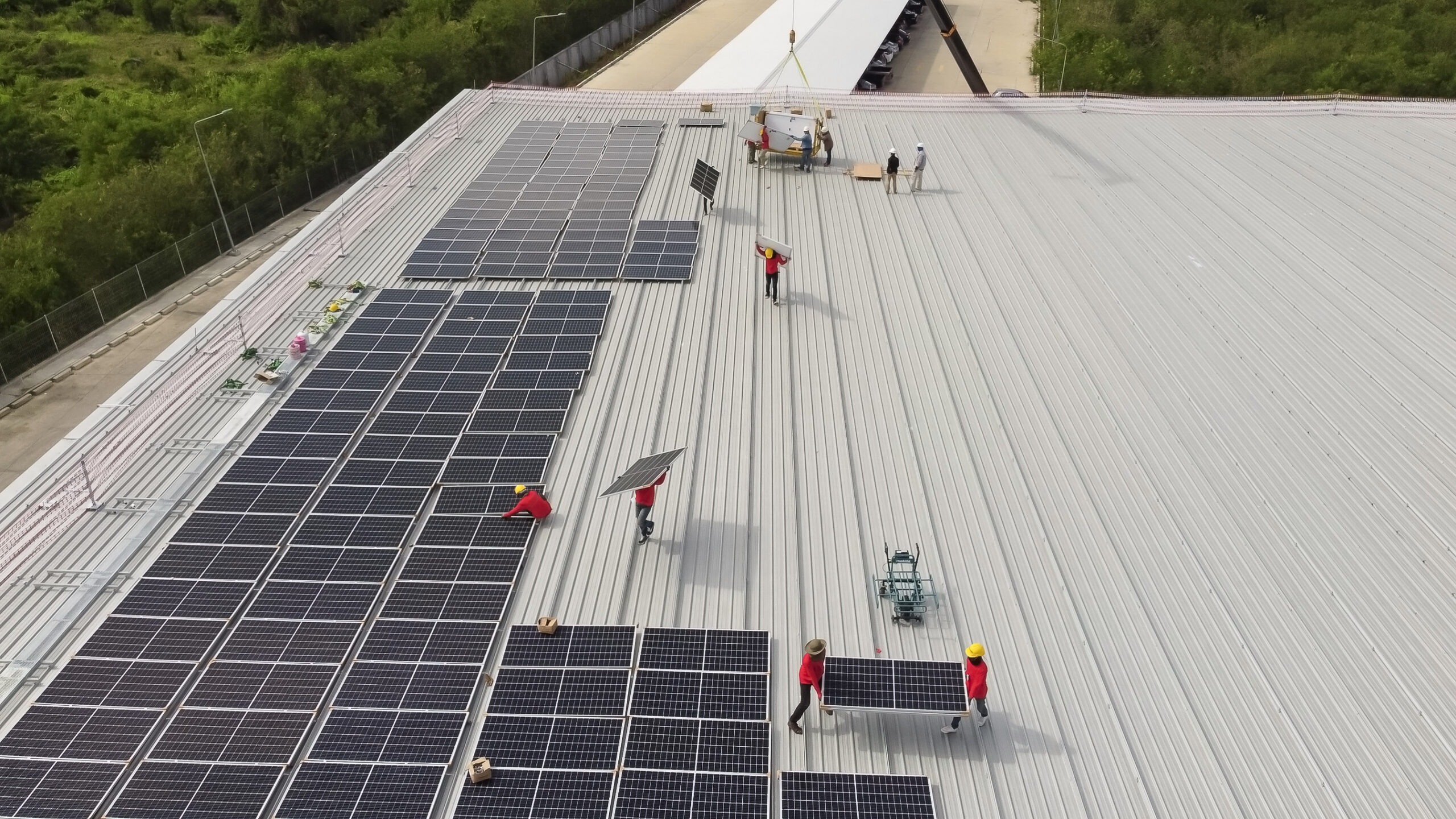Powering Warehouses and Facilities—Challenges and Solutions
Warehouse and material handling operators seeking to improve their productivity and efficiency through innovative technology must ensure that their facilities will support its adoption. Most crucially, electrical power supply and infrastructure must integrate seamlessly, or the energy input fundamental to these innovations will not be sufficient to operate them.
Optimizing your facilities’ power consumption requires a holistic approach—covering the entire system, from inputs to outputs.
Electrical Grid and Connections
Among the chief concerns in improving warehouse facilities is a debate stretching back to the 1880s and the early days of electrification—alternating current (AC) or direct current (DC)?
Then, AC was ultimately chosen as the primary current that would support electrification, as it provides greater flexibility regarding voltage conversion. However, the energy storage (e.g., batteries) widely used today operates via DC.[1]
And individual batteries aren’t the only systems running on DC; DC-based technologies include:
- Energy storage
- Renewable energy
- LED lighting
Moreover, converting electrical energy between AC and DC (i.e., “rectification”) is highly inefficient.
Grid Infrastructure Upgrades
Unfortunately, the project scope for converting a nation’s entire grid infrastructure from AC to DC is likely beyond feasible. Instead, rectifiers must be implemented at critical locations.
Rectifiers are already found in numerous devices’ charging equipment. For example, your mobile phone’s charger rectifies AC into DC every time you plug it in. The little box that directly plugs into an outlet contains a rectifier, and it is why phones do not use standard cords you would find for other appliances and equipment. The battery involved needs DC to charge.
While we already include rectifiers in charging systems for battery-powered devices and equipment, doing so at the scale warehouse and material handling facilities require is not efficient. Multiple rectifications and inversions (i.e., converting DC to AC) lead to unnecessarily complex circuitry. This becomes more true when trying to incorporate DC-based renewable energy.
Instead, warehousing and material handling operations should consider implementing a larger rectifier at their grid connection, creating a localized and DC-based grid.
American Honda Motor Co., Inc.—Facility Microgrid Example
At an American Honda Motor Co., Inc. warehouse, Bosch and UC Davis’ California Lighting Technology Center created one such microgrid. They established a DC-based system that the entire facility runs on by implementing Bosch’s Direct Current Building-Scale Microgrid Platform (DCBMP).
The DCBMP creates:[2]
- Reliable DC power delivery
- Outage resilience
- Increased efficiencies (and up to 30% cost reductions)
- Direct integration with renewable energy sources
By placing a large-scale rectifier in a single location—where facilities connect to the broader AC-based grid—warehouse and material handling operators can prime their entire facility to run on DC power. This better supports the batteries and many technological innovations emerging in the industry.
Renewable Energy
Warehousing and material handling technology integrations require more energy to operate—from autonomous mobile robots to off-site data centers storing enormous amounts of information. But relying on current infrastructure adds operational challenges, such as scheduling charging times to occur at off-peak rates rather than throughout ongoing operations at moments when it makes the most sense (i.e., opportunity charging).
Renewable power sources (e.g., wind, solar) provide a sustainable means to meet these increased energy demands, and, with DC-based microgrids, they can be readily integrated.
Integrating Renewable Energy with Facilities
Implementing renewable energy—particularly solar—enables warehouse and material handling facilities to reduce their grid dependence. Most facilities can be outfitted with rooftop solar panels. Further, with warehouse sizes more than doubling on average since the mid-2000s, there’s more rooftop space available to use.[3]
While the investment to create a rooftop solar farm may be high upfront, operators can also partner with groups to install panels. “Community solar” programs rent out rooftop space to construct farms that are integrated with and provide power to local electrical grids. There also tends to be fewer hurdles and less local opposition to placing solar farms atop warehouse facilities than in open areas at ground level.[4]
Particularly for operations during peak times, renewable energy offers cost reductions in addition to sustainability. But beyond immediate benefits, community solar opportunities also open new revenue generation avenues for facility owners and operators by selling power to the utility companies.
Energy Storage
To fully take advantage of renewable energy sources and ensure enough electricity is present to power equipment and technologies when needed, facilities will likely need to invest in storage alongside their other initiatives. Energy storage enables warehousing and material handling operators to:
- Minimize potentially lost energy when renewable generation rates exceed consumption
- Avoid peak usage with whatever remaining energy consumption comes from the
- Sell the excess collected energy back to utility companies to help them manage peaks
Energy storage effectively consists of massive lithium battery banks that are the size of shipping containers. Smaller versions of these banks are already being installed for residential use, and portable options have allowed electrification gains in areas such as construction equipment used on rural sites.
For warehouse and material handling facilities, energy storage capabilities go hand-in-hand with renewable sources to reduce grid dependence, increase utility bill savings, and adopt more sustainable operations. Because these storage banks comprise lithium batteries, they require DC power inputs much like other equipment, innovations, and renewables. As mentioned above, establishing a facility-dedicated and DC-based microgrid will best support holistic energy use.
Optimizing Output—Efficient Equipment, Batteries, and Chargers
Most energy optimization efforts that warehouse and material handling operators can implement solve challenges on the input side. But what about output?
If the equipment, batteries, and chargers utilized are not optimized for efficiency, then the gains and cost reductions achieved can be lost when it comes time to draw energy from the system.
Forward-thinking investment strategies must also consider output efficiency.
Optimizing Batteries and Chargers
For batteries, the simplest solution is to transition from lead acid to lithium.
All other considerations aside, the inherent improvements provided by lithium reclaim significant bandwidth and reduce costs. Most facilities require a dedicated room merely to charge and cool lead-acid batteries, and their usage durations are much shorter. Lithium batteries also allow for opportunity charging—an essential capability for 24/7 operations and heightened seasonal demand.
For chargers, original equipment manufacturers (OEMs) should partner with expert developers to determine the best systems. Most equipment benefits from on-board charging—which is more accessible now due to lithium batteries’ improved power-to-weight ratio and overall smaller size. Charge algorithms must also be optimized to reduce the time it takes to regain full .
Of course, the chargers will also need to change alongside these other innovations. Instead of starting with AC-DC rectifiers at their input, new DC-DC converters will be needed that properly regulate voltage from the microgrid bus to the voltage level required by equipment batteries. These converters will still need sophisticated controls, data collection, and charge algorithms – these DC-DC versions will require the industry’s best to develop and commercialize.
As crucial as large-scale investments are to building warehouses and facilities of the future, ensuring efficient electrical systems still requires utilizing optimal equipment, power sources, and charging capabilities out on the floor.
Want to learn more?
Visit our landing page for more information on the application and technology trends in mobile robotics.
About Delta-Q Technologies
Delta-Q Technologies is charging the future and driving the world’s transition into electric energy! We collaboratively design, test, and manufacture robust battery chargers, that improve the performance of our customer’s electric drive vehicles and industrial machines. As the supplier of choice for Tier 1 OEMs, they use their values, perseverance, and engineering expertise to guide their customers through the electrification process for a sustainable world.
They are part of the Zapi Group of companies and headquartered in Vancouver, Canada. Delta-Q’s team and distribution span five continents to service industries such as electric golf cars, lift trucks, aerial work platforms, e-mobility, floor care machines, utility/recreational vehicles, and new markets, like outdoor power equipment, marine and construction equipment. For more information, please visit www.delta-q.com or follow company updates on Twitter and LinkedIn.
Sources:
[1] US Department of Energy. The War of the Currents: AC vs. DC Power. https://www.energy.gov/articles/war-currents-ac-vs-dc-power
[2] UC Davis California Lighting Technology Center. DC Building-Scale Microgrid Platform. https://cltc.ucdavis.edu/dc-building-scale-microgrid-platform
[3] RIS. The Average Warehouse Has More Than Doubled In Size, Thanks to E-Commerce. https://risnews.com/average-warehouse-has-more-doubled-size-thanks-e-commerce
[4] NY Times. Amid Soaring Demand for Warehouses, an Effort to Make Them Greener. https://www.nytimes.com/2022/04/12/business/green-warehouses-solar-rooftop.html






